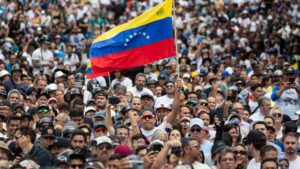
Systemic solutions require less obvious arrangements; country must guarantee strategies in light of diversity to lead this agenda, writes Livia Pagotto
There is a lot of talk these days that the time for the bioeconomy has arrived. The World Business Council for Sustainable Development estimates that the sector could generate US$7.7 trillion globally.
Ambassador André Corrêa do Lago, in a recent interview, estimated that Brazil could produce around US$500 billion per year with products from the area. In parallel, the confluence of political events involving Brazil and the immense opportunities for advancement in this agenda are, in fact, unique.
The G20, under Brazilian presidency until November this year, included the topic as one of the fronts – through the unprecedented initiative on bioeconomy (G20 Initiative on Bioeconomy)– which can help reduce social inequalities and combat poverty and hunger. It is the first time that the issue has been debated in an exclusive multilateral environment.
There is also, in dialogue with GIB, a group of 21 organizations creating inputs and proposals, gathered in the document (PDF – 6 MB) released this month, titled “The Global Bioeconomy: Preliminary Survey of G20 Strategies and Practices: a contribution to the G20 Bioeconomy Initiative”.
COP 30 will also represent an important moment of continuity for the G20 itself so that the bioeconomy finds the instruments to enhance it, based on global and national political commitments. Not to mention how regions, especially Europe, are moving strongly towards promoting this type of economy.
It’s in Brazil? How will we give the necessary stature to our bioeconomy, while the world continues to move in parallel and, sometimes, with greater assertiveness?
FACING A NON-PLURAL BIOECONOMY
Brazil, due to its socio-environmental characteristics and regional differences, has the immense advantage of being able to foster this diversity. The initiatives “Uma Concertação pela Amazônia” and “Amazônia 2030” are examples of collectives that explore the value of the multiplicity of Brazilian bioeconomies.
The Concertação, for example, speaks of sociobioeconomia when referring to the connection between biological and cultural diversities centered on inclusive value chains of non-timber forest products linked to indigenous peoples and traditional communities; in forest bioeconomy, when they are activities linked to management methods, such as forestry of native forests, integrated livestock-crop-forest production systems, agroforestry systems and recovery of degraded areas. Finally, there are the bioeconomies linked to intensive production processessuch as planted forests and commercial agriculture, in converted areas.
The Amazon 2030 initiative addresses the biotechnological visionwhich emphasizes the importance of biotechnology and its commercial application; the bioresources visionwhat promotes the development of new processing chains for bio-based raw materials with a view to replacing fossil raw materials; It is the bioecological visionwhich prioritizes sustainability and ecological processes that optimize the use of energy and natural resources, promote the conservation of biodiversity and avoid monocultures and soil degradation.
VALUE THE PAST TO GET INTO THE FUTURE
Valuing the past is recognizing the value and potential of the socio-bioeconomy, that is, that linked to the knowledge and practices of indigenous peoples and traditional communities in Brazil.
There is a long and necessary way to go in understanding these practices and how they are implemented. Reaching the future means defining Brazil’s ambition: what economies we want to have and what is the role of bioeconomies in our trajectory as a nation.
CONCEPT AND ACT
Finally, the ambition of Brazilian bioeconomies will depend on the reconciliation between conceptualization and action. Conceptualization of the bioeconomy as “exercise of understanding an economic activity about another way of producing value”, as I brilliantly heard from Prof. Francisco de Assis Costa, from UFPA (Federal University of Pará). And action through the installation of structuring conditions so that they occur:
- training professionals through education;
- strengthening science, technology and innovation systems in biodiversity and, consequently, in bioeconomy;
- coordinating shared and customized infrastructure and logistics systems for the specificities of bioeconomic activity and the environments where it takes place (such as the Amazon);
- establishing institutional and regulatory frameworks such as the long-awaited National Bioeconomy Policy and its National Bioeconomy and Sociobioeconomy Plans;
- catalyzing financial resources and fostering new business models that include startup activities and mixed financing arrangements.
This set of visions and possible paths conceptually reinforces what the title of this article already provokes: that there is no single bioeconomy and that recognizing its plurality requires understanding that there is no “silver bullet”. Systemic solutions require less obvious arrangements and understanding of complexities. Ensuring strategies in light of diversity is the way for Brazil to be able to lead this agenda.
Source: https://www.poder360.com.br/opiniao/bioeconomias-um-caminho-de-acao-para-o-brasil/

